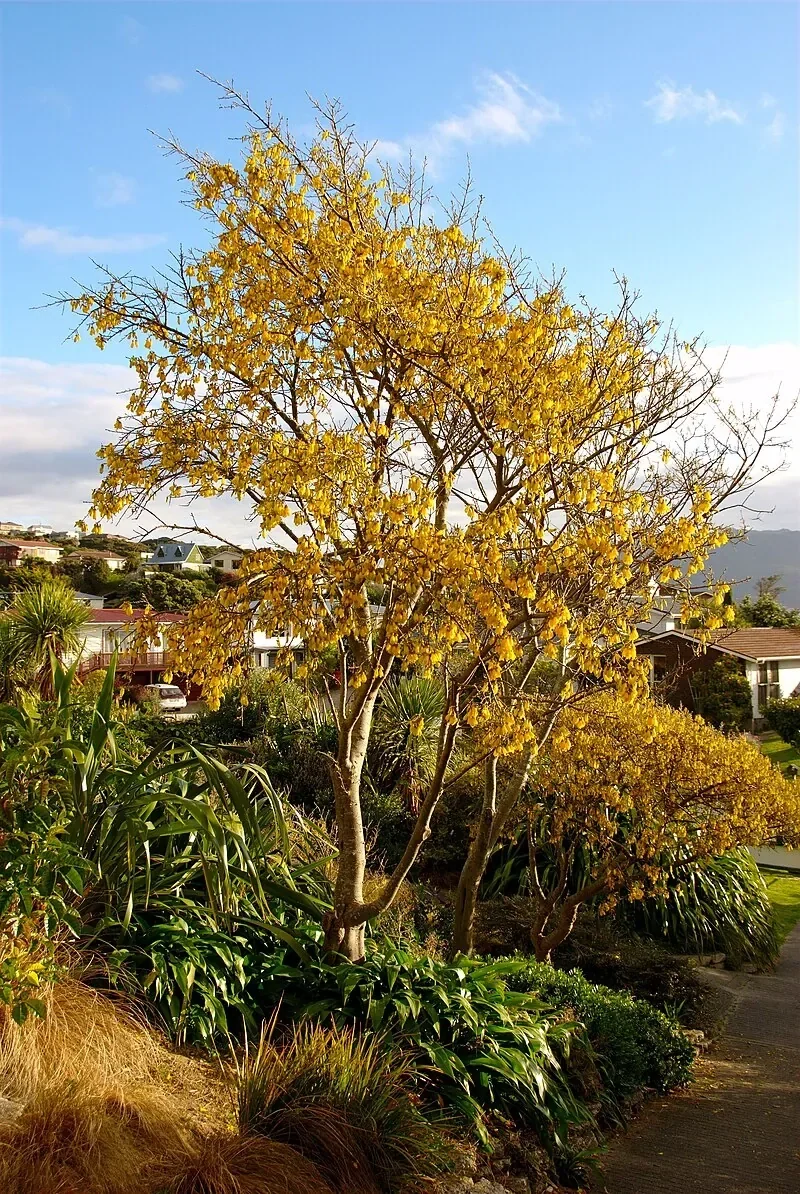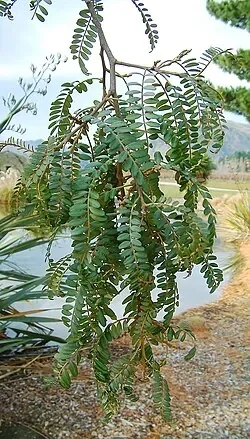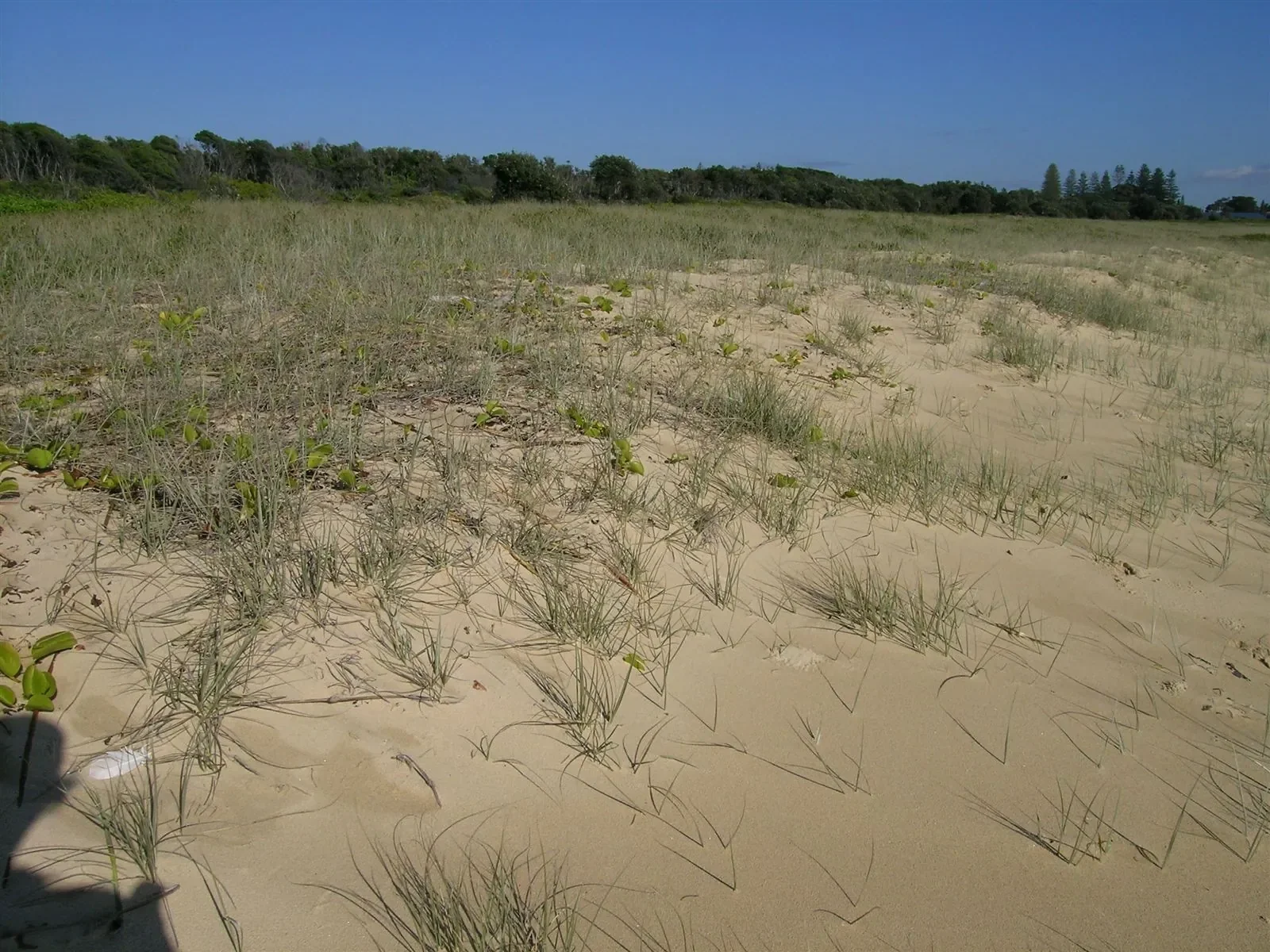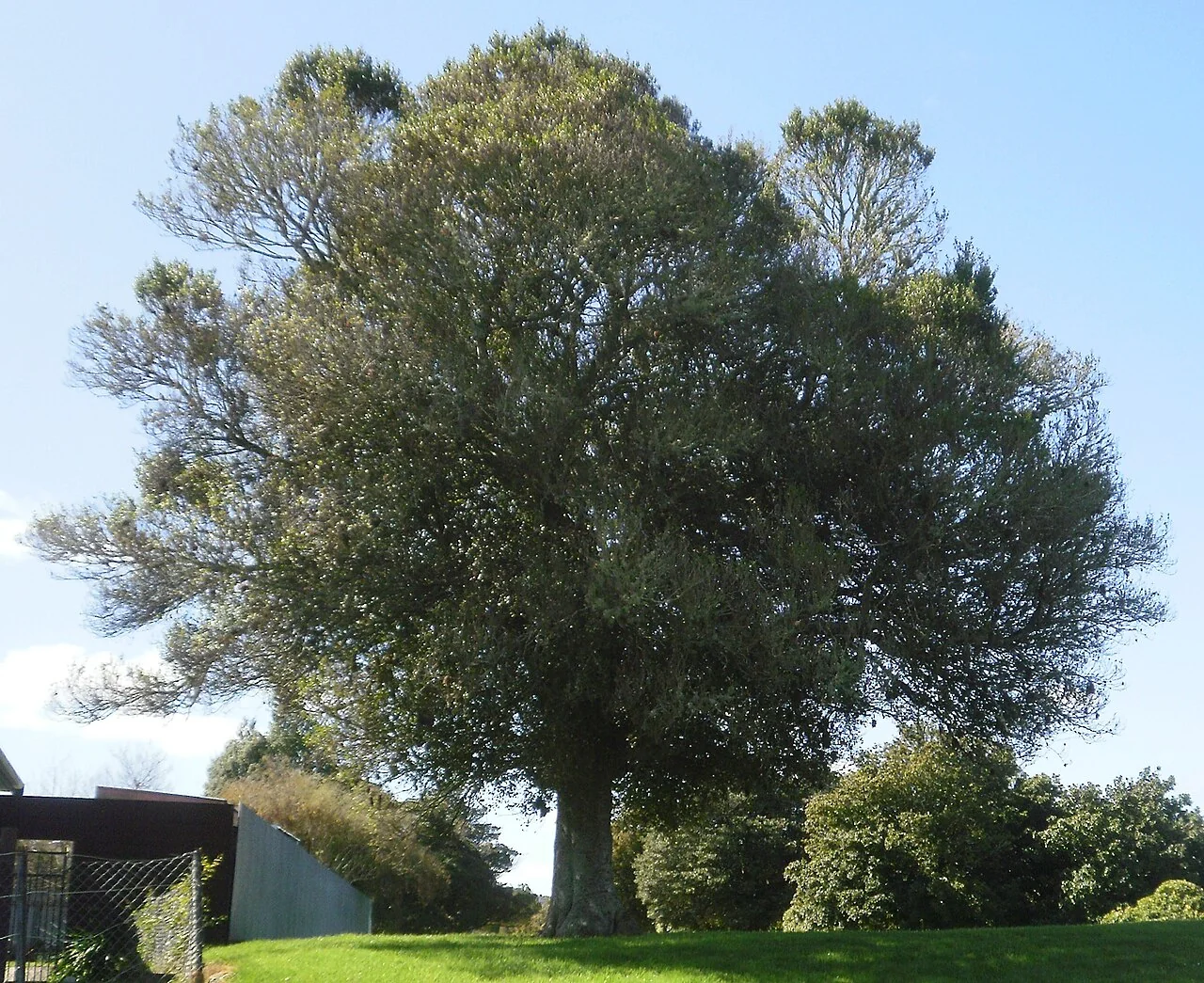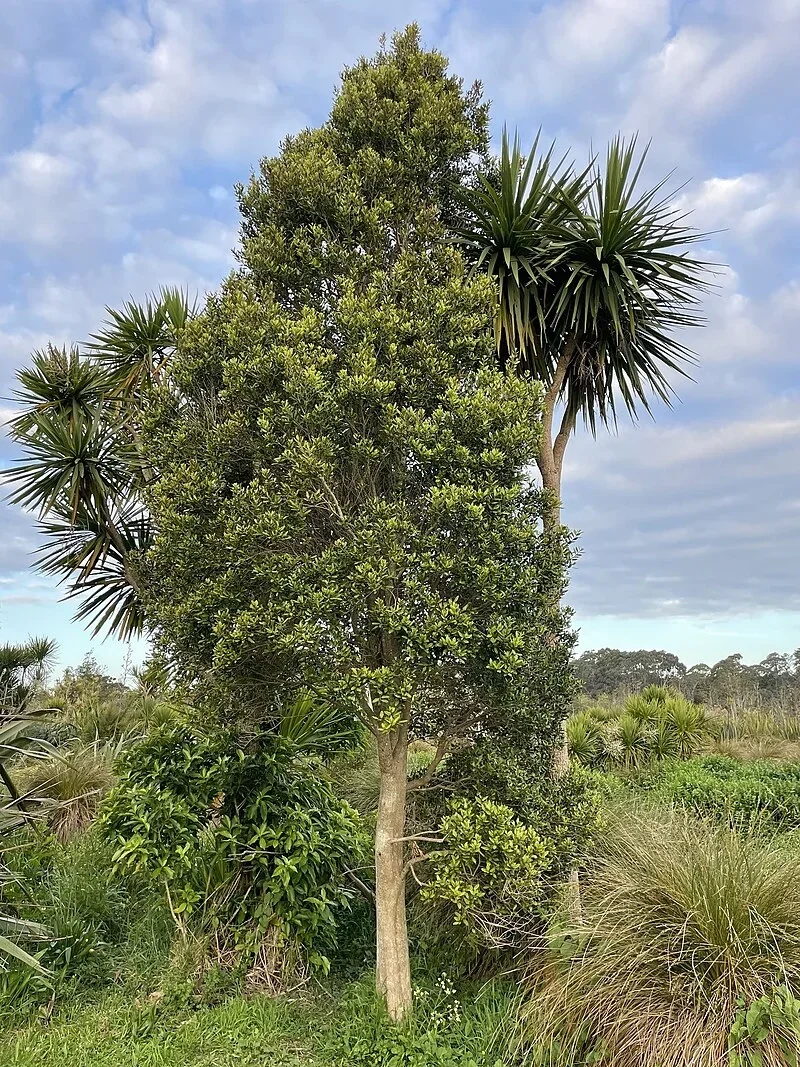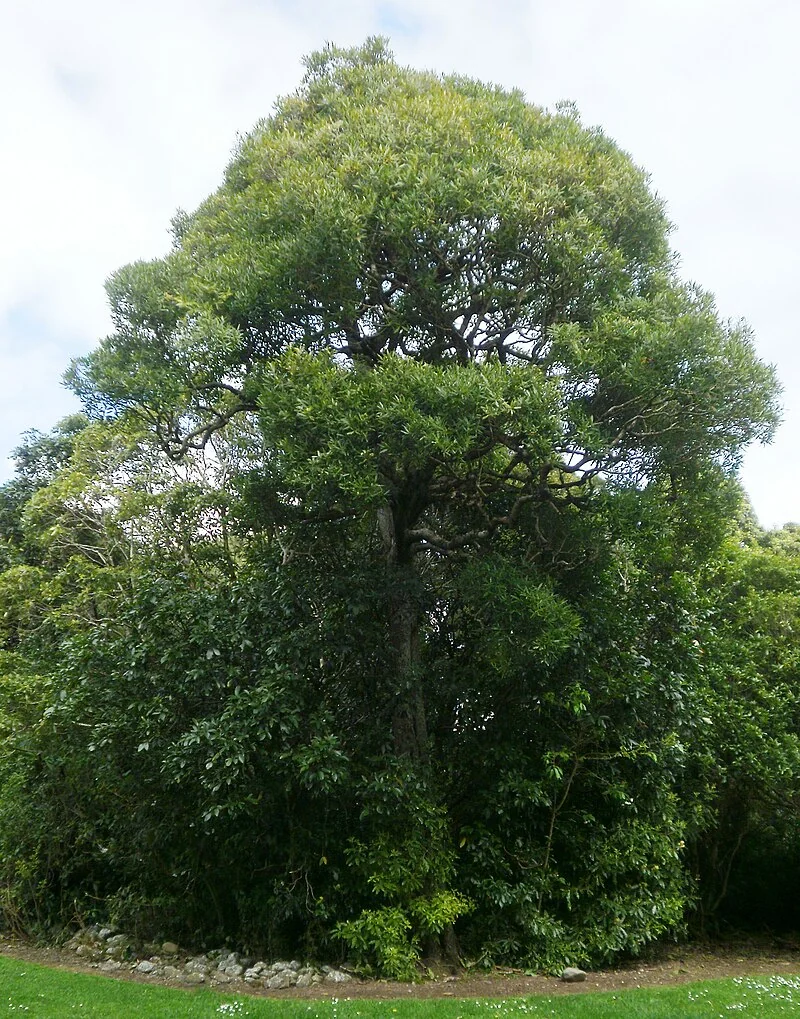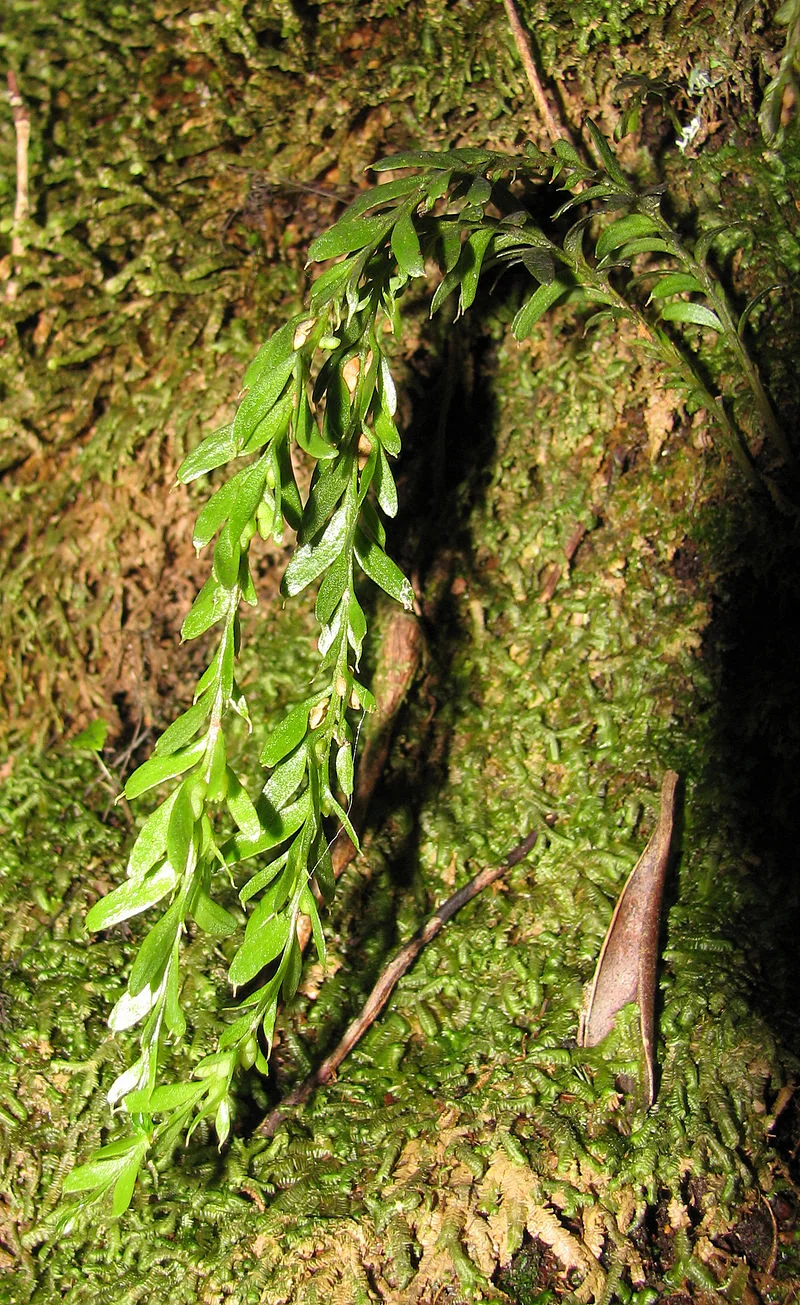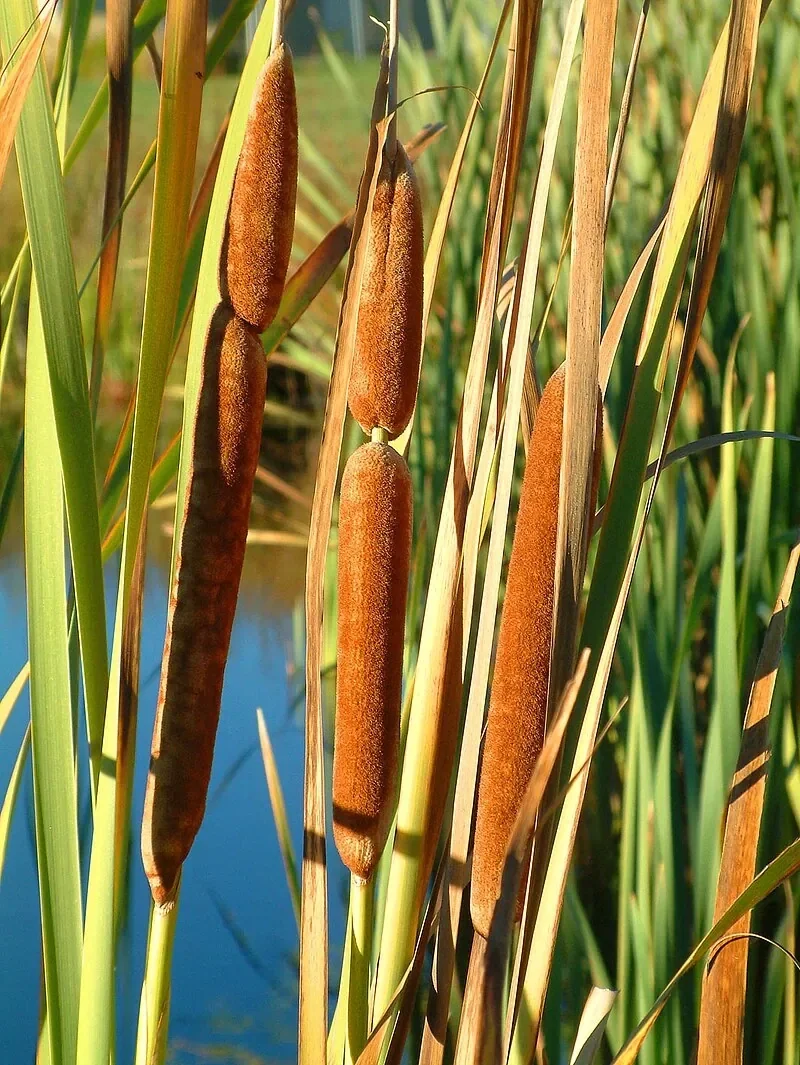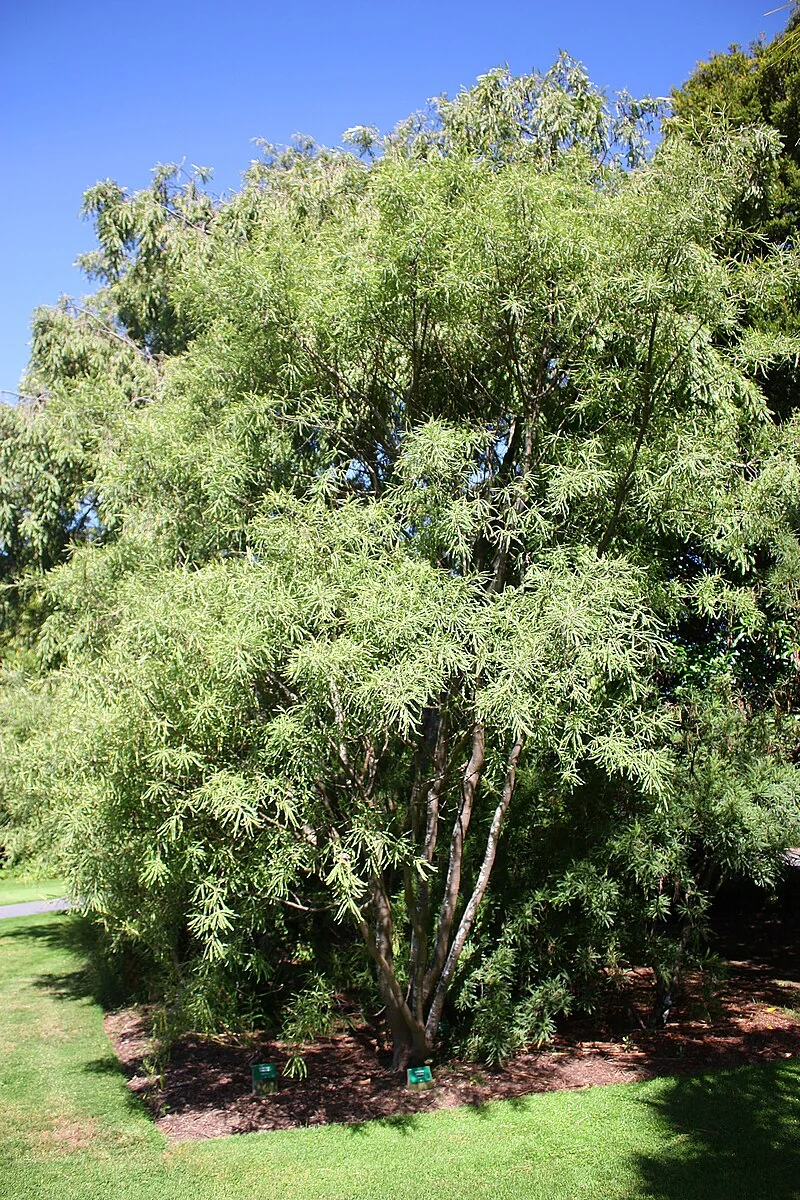
Golden Kōwhai
Sophora fulvida
Golden Kōwhai (Sophora fulvida) stands as one of New Zealand's rarest and most distinctive native trees, distinguished by its remarkable golden-brown bark and spectacular displays of brilliant yellow flowers. Endemic to a small area of eastern Canterbury, this critically important species represents a unique evolutionary adaptation within the k� whai family. With its distinctive golden bark that gives the species its common name, Golden K� whai has captured the attention of botanists and conservationists alike. Listed as Nationally Vulnerable, this remarkable tree serves as an excellent example of New Zealand's specialized endemic flora and plays an important role in native tree conservation efforts.

Plant Description
Botanical Features
Golden Kōwhai (Sophora fulvida), also known as k� whai or west coast k� whai, is a small evergreen tree native to New Zealand, growing up to 10 meters tall. It is found naturally in the Northland, Auckland, and Waikato regions. Adult trees have leaves up to 140 mm long, bearing 60-90 small, roughly elliptical, hairy, yellow-green or grey leaflets. Young branches are also hairy. It produces bunches of drooping, golden-yellow flowers, typically blooming from October to November. These flowers attract nectar-seeking birds. The tree produces dry, ridged, and knobbly seed pods, 60-190mm long, containing hard yellow seeds. Fruiting occurs in April-May. Sophora fulvida thrives in open or disturbed sites, particularly on base-rich volcanic rock, rubble, and outcrops, often within mixed podocarp-hardwood forests. It can tolerate moderate coastal conditions and dryness.
Quick Facts
| Scientific Name | Sophora fulvida |
|---|---|
| Height | 6-12 m |
| Spread | 4-8 m |
| Water Needs | Moderate, drought tolerant when established |
| Light | Full sun to partial shade |
| Frost Tolerance | Very hardy |
| Salt Tolerance | Moderate |
| Growth Rate | Medium |
| Lifespan | Long |
Climate Best Suited to
Golden Kōwhai (Sophora fulvida) naturally occurs in a very limited range in eastern Canterbury, where it experiences a continental climate with hot, dry summers and cold winters. This species has adapted to areas with significant temperature variations and relatively low rainfall, making it particularly suitable for inland regions with similar climatic conditions. The species shows excellent tolerance to frost and drought conditions once established, reflecting its adaptation to the harsh inland Canterbury environment where winter temperatures can drop well below freezing.
Regional Suitability
| City | Climate Suitability |
|---|---|
| Whangārei | Good |
| Auckland | Good |
| Hamilton | Ideal |
| Tauranga | Good |
| Rotorua | Ideal |
| Gisborne | Good |
| New Plymouth | Ideal |
| Napier | Ideal |
| Whanganui | Ideal |
| Palmerston North | Ideal |
| Wellington | Good |
| Nelson | Ideal |
| Christchurch | Ideal |
| Dunedin | Good |
| Invercargill | Moderate |
Natural Habitat
Golden Kōwhai (Sophora fulvida), also known as k� whai or west coast k� whai, is a species of tree native to New Zealand. Its natural habitat is primarily found in the Northland, Auckland, and Waikato regions of the North Island, particularly along the west coast.
Key Habitats Include:
- Open or Disturbed Sites: This species thrives in open or disturbed sites, often growing on base-rich volcanic rock, rubble, and outcrops.
- Mixed Podocarp-Hardwood Forests: It is commonly found within mixed podocarp-hardwood forests, indicating its role as a component of these native forest ecosystems.
- Coastal Conditions: It can tolerate moderate coastal conditions and dryness, showcasing its adaptability to exposed environments.
Conservation Status:
- "At Risk - Naturally Uncommon": Sophora fulvida is considered "At Risk - Naturally Uncommon" due to its restricted range, highlighting its conservation importance.
The presence of Sophora fulvida in these specific habitats underscores its ecological importance in contributing to the biodiversity and structural complexity of New Zealand's native forests, particularly in the northern regions.
Plant Conservation
Sophora fulvida, also known as k� whai or west coast k� whai, is a native New Zealand tree species facing conservation challenges. It is endemic to New Zealand, with its natural range restricted to the Northland, Auckland, and Waikato regions of the North Island. Under the New Zealand Threat Classification System, Sophora fulvida is classified as "At Risk - Naturally Uncommon," reflecting its naturally restricted geographical range. The primary threats to Sophora fulvida include competition from invasive weeds, browsing by introduced animals, and habitat loss due to past forest clearance. Conservation efforts involve propagation from seeds and cuttings, and the plant is available from commercial nurseries.
Growing Requirements
Soil Requirements
Golden Kōwhai (Sophora fulvida) thrives in well-drained soils and shows particular tolerance to alkaline conditions, reflecting its adaptation to the limestone-influenced soils of its natural habitat. The species performs best in free-draining positions and can handle quite poor, rocky soils once established. Good drainage is essential as the species cannot tolerate waterlogged conditions, particularly during winter months when growth is minimal.
- Requires excellent drainage, cannot tolerate waterlogging
- Tolerates poor, rocky soils and alkaline conditions
- Prefers slightly alkaline to neutral pH conditions
- Performs well in limestone-influenced soils
- Benefits from deep soil preparation during establishment
Light Requirements
Golden Kōwhai (Sophora fulvida) performs best in full sun positions where it can develop its characteristic compact, branching habit and produce abundant flowering displays. While it can tolerate partial shade, optimal growth and flowering occur with maximum sunlight exposure. The species has adapted to the open, sunny conditions of its natural Canterbury habitat and benefits from good air circulation around the canopy.
- Prefers full sun for optimal growth and flowering
- Can tolerate partial shade but may become leggy
- At least 6 hours of direct sunlight daily is ideal
- Benefits from good air circulation around canopy
- Avoid heavily shaded or enclosed positions
Water Requirements
Golden Kōwhai (Sophora fulvida) demonstrates excellent drought tolerance once established, reflecting its adaptation to the dry summers of inland Canterbury. During establishment, consistent moisture is important, but mature plants can withstand extended dry periods. The species is particularly sensitive to winter wet conditions and requires reduced watering during the cooler months when growth is dormant.
- Moderate watering during establishment phase
- Excellent drought tolerance once mature
- Reduce watering significantly during winter months
- Cannot tolerate waterlogged winter conditions
- Deep, infrequent watering promotes strong root development
Planting Guide
Sophora fulvida, also known as Southern Kōwhai or West Coast Kowhai, is a beautiful New Zealand native tree admired for its golden yellow flowers and fine green foliage. It's a hardy, low-maintenance species that attracts native birds like tūī and kererū.
1. Site Selection
- Sunlight: Plant Sophora fulvida in a sunny position, ideally in full sun, to encourage prolific flowering. It can also tolerate partial shade.
- Soil: It thrives in well-draining, high-fertility soil. It tolerates wind, salt, and moderate drought once established, making it suitable for coastal or exposed sites. For clay soils, improve drainage by adding extra topsoil and raising beds, incorporating coarse sand, bark, compost, or other organic material.
2. Preparation for Planting
- Plant Selection: Always choose healthy, well-grown plants.
- Timing: The best time to plant is after autumn rains when the soil is moist and warm, allowing plants to establish before winter. This helps them withstand dry periods in the following summer.
- Soil Enrichment: Enrich garden soil with compost or organic matter to ensure it's well-draining and moisture-retentive.
3. Planting Process
- Root Ball Preparation: Before planting, ensure the root ball is saturated. Remove the planter bag or pot with minimal root disturbance.
- Trimming: Trim any broken roots.
- Hole Digging: Dig a hole twice the diameter of the root ball.
- Placement: Plant the tree at the same level as it was in the container. Avoid planting it in a hole where the root ball might sink below the surrounding ground level; planting into slightly raised beds of well-cultivated soil is often desirable to improve drainage and aeration for surface roots.
- Firming and Watering: Firm the soil around the plant and water thoroughly once planted.
4. Watering
- Initial Establishment: Water well during the first year to help establishment. Young plants require thorough watering during dry periods over the first two to three years.
- Ongoing: Water deeply during dry periods, especially in the first year of growth. Once established, it is largely self-sufficient and drought-tolerant, requiring minimal water.
5. Fertilizing
- Initial: Plant with some general slow-release fertilizer.
- Ongoing: Apply an organic-based fertilizer, such as blood and bone, every spring (a handful per square meter). A light application of native fertilizer in spring will encourage healthy growth and prolific flowering. For potted plants, use a liquid fertilizer every four weeks during the growing season.
6. Mulching
- Mulching around the base helps retain moisture and suppress weeds. Keep mulching material away from the trunk.
7. Pruning
- Pruning is not normally required until the plant gets larger and may be needed to maintain a good shape.
- Prune after flowering to keep plants compact and promote new growth.
- Avoid pruning between November and February, as this is when borer insects are active, which can be damaging to k� whai.
8. Pests and Diseases
- Sophora fulvida is relatively pest and disease-resistant. Borers can be a pest, but established trees can often live with them for a long time. Watch for caterpillars that may occasionally nibble foliage.
9. Propagation
- Sophora fulvida is easy to grow from seed. The hard seed coat should be lightly nicked or sanded to expose the endosperm. Soaking seeds in water overnight before sowing often improves germination success.
- It can be grown from cuttings, but these are usually very slow and hard to strike.
Ecological Role
Pollinators and Food Webs
Kōwhai species are premier nectar sources for tūī and korimako/bellbird in late winter and spring. Flowers also attract native bees and flies. Foliage is browsed by the k� whai moth (Uresiphita polygonalis maorialis), an endemic looper whose larvae specialise on Sophora.
Soils and Nitrogen
As a legume, Sophora fulvida hosts nitrogen-fixing bacteria in its root nodules, improving soil fertility for nearby plants on otherwise lean, rocky coastal sites.
Habitat Function
On coastal bluffs and rocky slopes, the deep root system helps bind shallow soils, while the open canopy provides sunny perches and shelter for small birds and invertebrates.
Uses and Significance
Conservation Value
Golden Kōwhai (Sophora fulvida) holds tremendous conservation significance as one of New Zealand's rarest native trees. With its extremely limited natural distribution in eastern Canterbury, every specimen contributes to the species' genetic diversity and survival. Cultivation of this species in gardens and restoration projects plays a vital role in conservation efforts, helping to establish genetically diverse populations outside its restricted natural range and ensuring the species' long-term survival.
- Nationally Vulnerable species requiring conservation attention
- Extremely limited natural distribution in eastern Canterbury
- Garden cultivation contributes to species conservation
- Helps maintain genetic diversity through cultivation
- Important for ex-situ conservation programs
Garden Uses
- Excellent specimen tree for distinctive golden bark
- Perfect for dry gardens and alkaline soil conditions
- Spectacular spring flowering display
- Suitable for smaller garden spaces due to compact habit
- Low-maintenance once established
Landscaping Ideas
Coastal Focal Tree
Golden k� whai is striking as a specimen in coastal and dry gardens. Combine with silver foliage and grasses for a high-contrast spring display that also feeds tūī and bellbird.
Seasonal Care Calendar
Spring
Spring is the peak season for Golden Kōwhai (Sophora fulvida), with the spectacular flowering display typically occurring from August through November. New growth begins as temperatures warm, and this is an excellent time for planting or transplanting specimens. Apply organic fertilizer if desired and gradually increase watering as active growth resumes.
- Peak flowering period with brilliant yellow displays
- Apply organic fertilizer to support flowering
- Ideal time for planting new specimens
- Gradually increase watering as growth resumes
- Monitor for new growth and adjust care accordingly
Summer
Summer sees Golden Kōwhai (Sophora fulvida) completing its flowering cycle and beginning seed development. The species' drought tolerance becomes apparent during this season, though young plants benefit from occasional deep watering during extended dry periods. This is when the golden bark character is most pronounced and visible.
- Flowering completes and seed pods begin development
- Excellent drought tolerance demonstrated
- Water young plants during extended dry periods
- Golden bark character most visible
- Avoid fertilizing during peak summer heat
Autumn
During autumn, Golden Kōwhai (Sophora fulvida) begins preparing for winter dormancy with growth slowing significantly. This is an excellent time for seed collection if propagation is desired, as the woody pods mature and split to release seeds. Begin reducing watering frequency as temperatures cool and growth activity decreases.
- Growth slows as plant prepares for winter
- Ideal time for collecting mature seeds
- Begin reducing watering frequency
- Good time for structural pruning if needed
- Apply mulch to protect roots from winter cold
Winter
Winter is a dormant period for Golden Kōwhai (Sophora fulvida), with the species showing excellent cold tolerance adapted to its inland Canterbury origins. Minimal care is required during this period, with significantly reduced watering essential to prevent root problems. This is the optimal time for major pruning if structural work is needed.
- Dormant period with excellent cold tolerance
- Significantly reduce watering to prevent root rot
- Optimal time for major structural pruning
- Requires minimal care during dormancy
- Protect young plants from harsh winds
When to Prune and How Much
Golden Kōwhai (Sophora fulvida) naturally develops an attractive, compact form and requires minimal pruning to maintain its shape. Focus on removing dead, damaged, or crossing branches and light shaping to enhance the tree's natural character. The species responds well to pruning but should be pruned conservatively to maintain its distinctive branching pattern.
- Remove dead, damaged, or diseased branches any time of year
- Light formative pruning when young helps establish good structure
- Major pruning best done in late winter during dormancy
- Remove crossing or rubbing branches to prevent damage
- Maintain natural compact branching pattern
- Avoid heavy pruning which can reduce flowering
Always use clean, sharp pruning tools to minimize disease risk and ensure clean cuts. The distinctive golden bark should be preserved during pruning operations, as this is one of the species' most valued characteristics. Young trees may benefit from staking in windy locations until well established.
How to Grow Golden Kōwhai
Golden Kōwhai (Sophora fulvida) can be successfully propagated through both seed and cutting methods, though seed propagation is generally more reliable and allows for genetic diversity important in conservation efforts. Due to its conservation status, every successfully grown plant contributes to the species' survival and should be considered valuable regardless of the propagation method used.
From Seed
Growing Golden Kōwhai from seed is the most reliable propagation method and contributes directly to conservation efforts by maintaining genetic diversity. Fresh seed provides the best germination rates and should be collected when pods naturally split open.
- Collect mature seed pods in late autumn (March-May) when they turn brown and begin to split naturally, revealing hard, orange-brown seeds inside
- Extract seeds from pods and remove any remaining pod material. Seeds have a hard coat requiring treatment for reliable germination
- Scarify seed coat by carefully nicking with a file or sandpaper, or by pouring boiling water over seeds and allowing to cool and soak for 24 hours
- Sow treated seeds immediately in well-draining seed-raising mix at 5-10mm depth
- Maintain consistent moisture and place in warm, bright location with temperatures around 18-22°C
- Germination typically occurs within 2-6 weeks depending on seed treatment and temperature
- Transplant seedlings to individual pots when they reach 10-15cm height and have developed several sets of true leaves
- Grow on in containers for at least one full growing season before planting in permanent positions
- Provide protection from frost and strong winds during the first two winters after planting
Seedlings typically reach flowering size within 4-6 years under good growing conditions, making this an excellent long-term investment for conservation and garden value.
From Semi-Hardwood Cuttings
Semi-hardwood cutting propagation can be successful with Golden Kōwhai and allows for the exact replication of parent plant characteristics, though success rates may be lower than with seed propagation.
- Take 10-15cm cuttings from healthy, current season's growth during late summer to early autumn (February-April) when wood has begun to firm
- Remove lower leaves, retaining only 2-3 pairs at the cutting tip to reduce moisture loss
- Make clean cuts just below a node using sharp, sterilized secateurs
- Dip cut end in rooting hormone powder containing IBA to improve rooting success rates
- Insert cuttings into free-draining propagation mix of equal parts sand and compost
- Maintain high humidity by covering with plastic or placing in humidity chamber with temperatures around 18-20°C
- Provide bright, indirect light and mist regularly to prevent wilting
- Root development typically takes 6-12 weeks - test by gentle tugging
- Pot up rooted cuttings individually and grow on for one season before planting out
- Gradually acclimatize young plants to outdoor conditions before final transplanting
From Grafting
Grafting Golden Kōwhai onto rootstock of other Sophora species can be an effective propagation method, particularly useful for maintaining specific genetic lines or improving growth vigor in challenging conditions.
- Use healthy seedling rootstock of Sophora microphylla or S. tetraptera
- Take scion wood from current season's growth during winter dormancy
- Perform whip-and-tongue grafts or cleft grafts depending on stem sizes
- Ensure close contact between cambium layers of rootstock and scion
- Secure graft union with grafting tape and seal with grafting wax
- Maintain in controlled environment until union is well established
Transplanting and Establishment
Successful establishment of Golden Kōwhai requires careful attention to site selection and post-planting care to ensure plants develop into healthy, long-lived specimens that contribute to conservation goals.
- Choose planting sites with full sun exposure and excellent drainage
- Prepare soil by improving drainage if necessary and incorporating coarse materials for heavy soils
- Plant at the same depth as in containers, avoiding burying the root collar
- Water thoroughly after planting but avoid overwatering during establishment period
- Apply organic mulch around plants but keep away from stem base
- Provide stake support if planting in windy locations
- Monitor closely during first summer, providing supplemental water during dry spells
- Protect from browsing animals and mechanical damage during establishment
With proper care, Golden Kōwhai establishes readily and begins producing its characteristic golden bark and spectacular flowering displays within 3-4 years of planting, developing into a valuable conservation specimen that will provide decades of garden interest.
Pests and Diseases
Kōwhai can host k� whai moth (Uresiphita polygonalis maorialis) caterpillars that periodically defoliate trees; healthy plants usually recover. Occasional scale and aphids may appear - hose off or treat early. Ensure sharp drainage; prolonged wet feet can cause root issues in heavy soils.
Cultural Significance
Sophora fulvida, also known as k� whai or west coast k� whai, holds cultural significance primarily in New Zealand, where it is endemic. It is one of eight native Sophora species in the country, all collectively known by the Māori name k� whai. The collective Māori name "k� whai" indicates its long-standing recognition and importance within Māori culture. The tree's large, golden-yellow flowers are a significant food source for nectar-feeding native birds, contributing to its ecological and ornamental value. Sophora fulvida is particularly prevalent in the Waitakere Ranges, leading to its embrace by Aucklanders as a special feature of their region. It is also valued for its resilience, distinctive sculptural form, and attractive coloration, thriving in challenging conditions such as severe root restriction, drought, and exposure to sun and wind, making it well-suited for urban environments.
Bonus Tip
For prolific flowering on coastal sites, grow in full sun and avoid rich fertilisers. If raising plants from seed, gently nick the seed coat and soak overnight to speed even germination.
